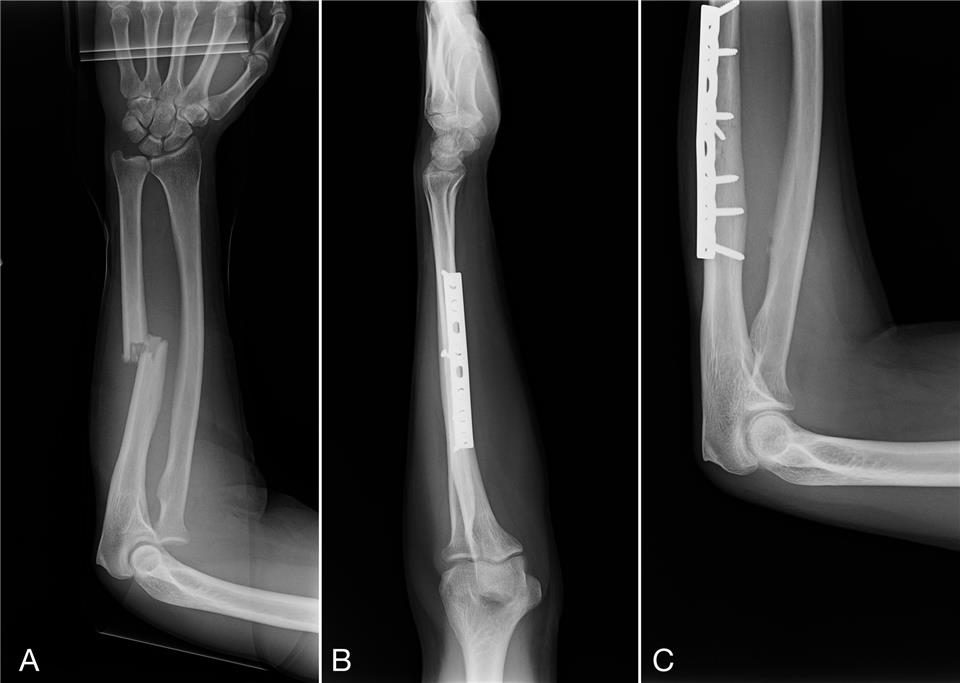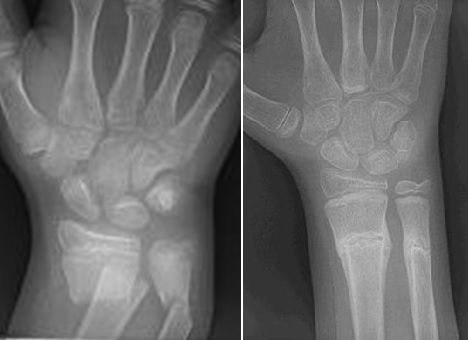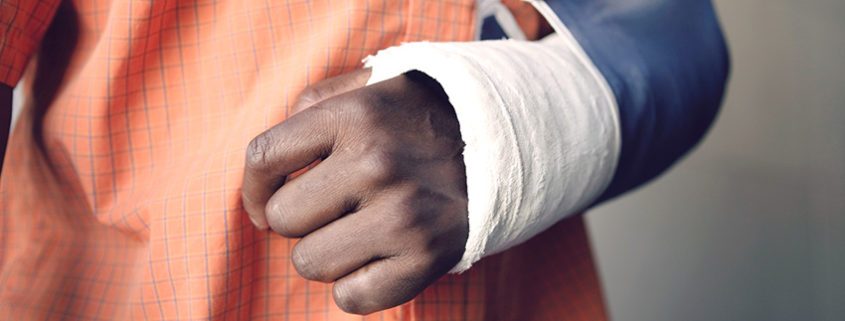Broken Arm: Signs, Symptoms, & Treatments
Description
A broken bone is commonly known as a fracture. Any bone in the arm can be broken, but common areas for fractures in the arm are:
- Wrist, specifically the distal radius
- Forearm bones (radius and ulna) (Figure 1A)
- Elbow
- Humerus
- Shoulder
Causes
Most broken arms are caused by trauma. In younger people, common causes are falls from a height, sports injuries and motor vehicle accidents. In older people with weaker bones, a trip and fall from a standing height is a common cause of a broken arm.
Signs & Symptoms
Sometimes it can be easy to tell that an arm is broken, such as when it looks crooked. Other times, if the broken bone has not moved far out of place, it can be difficult to tell. Generally, you should be evaluated by a health professional if your arm is:
- Bruised
- Painful
- Swollen
- Difficult to move
- Numb or tingly
Any deep cuts that might be associated with a broken bone should also be checked immediately since there is a risk of infection with broken bones that come through the skin.
Diagnosis
The doctor will check to make sure the nerves and blood vessels are okay. An x-ray is usually taken to diagnose a broken bone. Sometimes more studies, such as a CT scan or MRI, will be recommended.
Treatment

Figure 1ABC – An x-ray of an ulna fracture; Pins and screws holding the ulna in place

Figure 2 – A broken radius and ulna in a child and the healed bones after being treated with a cast
If the fracture is out of place, a doctor may try to straighten it (“reduce” the fracture). This is often done in the emergency department or within a few days after the break happens. In most cases, follow-up with a hand surgeon will be recommended.
Many times, especially in children, broken arms heal well in a cast (Figure 2). The cast is usually on for 4-6 weeks, after which activities may be restricted for 2-3 months. With certain types of breaks, or if a cast won’t be effective, the doctor may recommend surgery to straighten the bones and put in pins, screws, plates or other devices to hold the bones in place while they heal (Figure 1B and 1C).
Hand therapy is often recommended to help regain the range of motion and strength following a broken arm. In some simple fractures, it is expected that nearly all of the strength and motion can be recovered. In more complicated breaks, it is not uncommon to lose some motion as compared to the other arm. In severe cases, arthritis with pain and stiffness may result, even despite the best attempts to straighten the bones. In some cases, more surgery is eventually necessary.
Hand surgeons are specially trained to diagnose and treat fractures in the upper extremity. Visit a hand surgeon if you have injured your arm.
Figure 1A: An x-ray of an ulna fracture
Figure 1B and 1C: Pins and screws holding the ulna in place
Figure 2: A broken radius and ulna in a child and the healed bones after being treated with a cast
© 2015 American Society for Surgery of the Hand
Orthopedic Sports Medicine Center of Oregon is located in Downtown Portland Oregon. Dr. Dominic Patillo, one of our Board-Certified Orthopedic Surgeons, specializes in hand surgery. His practice focuses on the treatment of both simple and complex hand and upper extremity conditions as well as general orthopaedic trauma. He is experienced with modern microsurgical techniques including nerve and vessel reconstruction.
Common problems treated include:
- carpal tunnel syndrome
- tennis elbow
- wrist pain
- sports injuries of the hand and wrist
- fractures of the hand, wrist, and forearm
- trigger finger
Other problems treated can include arthritis, nerve and tendon injuries, and congenital limb differences (birth defects).
If you have pain in your fingers, hand, wrist or arm, or if you have other upper-extremity related concerns, please consult our hand specialist Dr. Dominic Patillo for a consultation.



